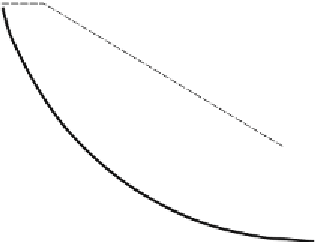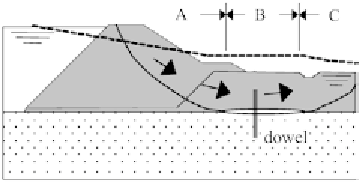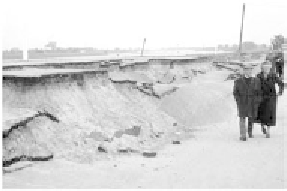Geoscience Reference
In-Depth Information
to zero, giving rise to uplift (Fig 9.9b: zone B) and sliding. In the mid eighties this
phenomenon was not well understood, and it caused a sudden collapse of a dike at
Streefkerk (Fig 9.9a). Since then careful observation of various dikes, geo-
centrifuge tests and finite element calculations have proven that uplift is a serious
failure mechanism. Stability can be improved by a berm, i.e. an extra load on the
leeside of the dike, an anchored sheet wall or a short unanchored buried sheet wall.
The latter, referred to as a dike dowel, is being considered here.
(a) (b)
Figure 9.9 (a) dike failure at Streefkerk, Netherlands, 1984, (b) uplift mechanism
An ultimate limit state of dike stability is represented by a compatible
kinematical visco-plastic flow field. This field can be decomposed in terms of
elementary solutions. A simplified method is used, considering apparent dynamic
cohesion
k
, representing local shear strength under continuing deformation. The
dissipation work rate during motion is considered. Two cases are considered: Case
I without a dowel and Case II with a dowel.
1.2h
M
1
G
3
2
R
=
4h
R
=
h
?
,t
M
2
3h
A
C
B
h
?
,t
?
¼
?
,t
,t
B
2
B
3
Figure 9.10 Embankment slip failure with kinematics in the uplift zone (B)































































Search WWH ::

Custom Search